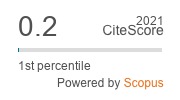Examining Retrofit Techniques for Concrete Beam-Column Joints
Abstract
This study looks into reinforced concrete (RC) interior beam-column joints by testing four full-size samples with cyclic lateral loading in one direction. The specimens, mimicking real-scale joints in a four-story RC frame structure, include a control (C-SW), one retrofitted with Carbon Fiber Reinforced Polymer (CFRP) (C1-RT-B SW), one repaired with steel plates (C1-RP-Steel SW), and one retrofitted with steel plates (C1-RT-Steel SW). Analysis shows seismic flaws common in buildings built before the 1970s, such as columns not being able to bend as much as beams, not having enough shear strength because the core joint doesn't have any transverse reinforcement, and transverse reinforcements not being spaced out enough. The study aims to assess and develop retrofit solutions for realistic interior beam-column joints, focusing on improving seismic performance. Results indicate that retrofitting with steel plates significantly enhances energy dissipation and ductility, while CFRP retrofitting exhibits lower dissipation due to its linear properties.




